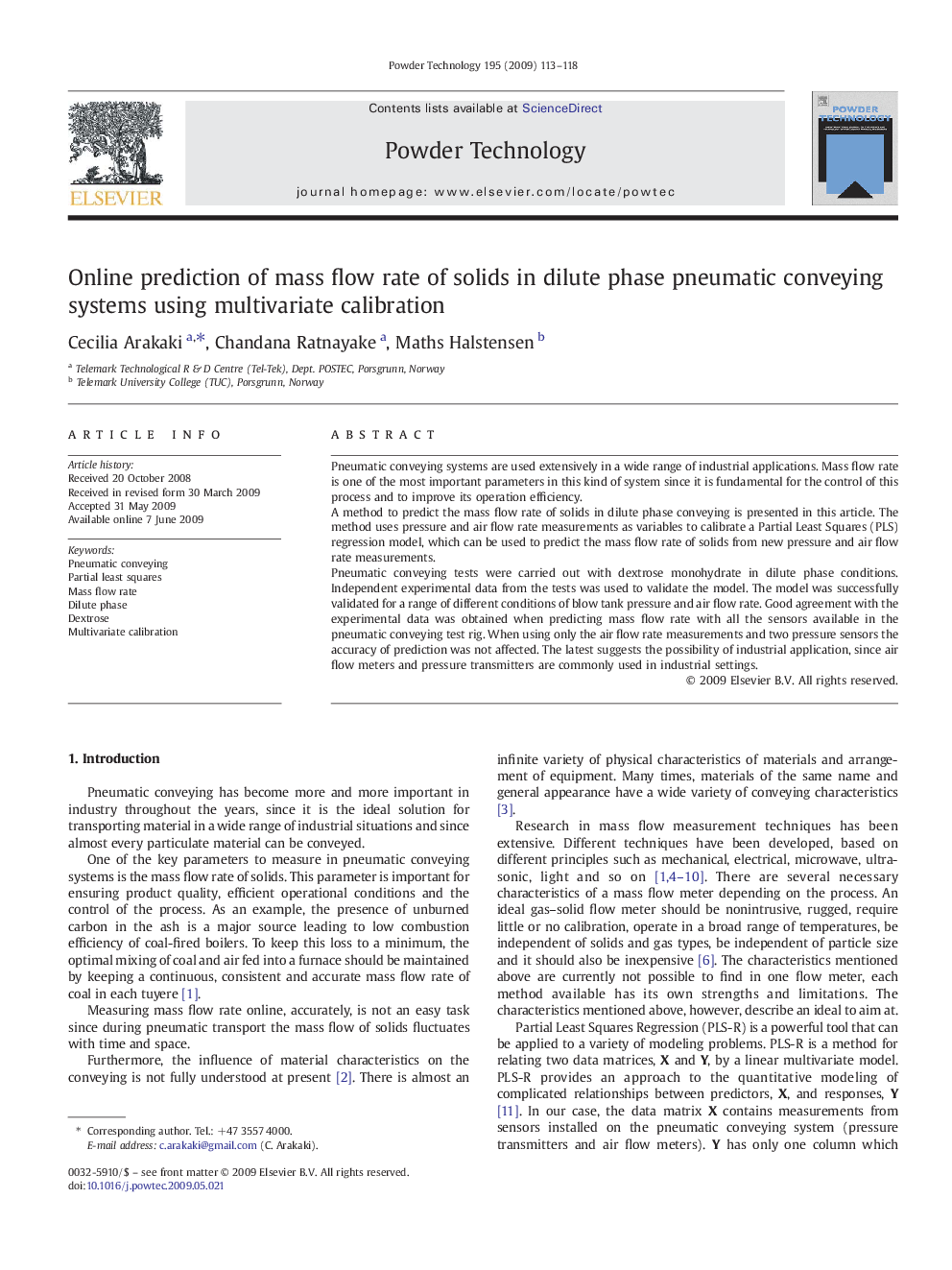| Article ID | Journal | Published Year | Pages | File Type |
|---|---|---|---|---|
| 238218 | Powder Technology | 2009 | 6 Pages |
Pneumatic conveying systems are used extensively in a wide range of industrial applications. Mass flow rate is one of the most important parameters in this kind of system since it is fundamental for the control of this process and to improve its operation efficiency.A method to predict the mass flow rate of solids in dilute phase conveying is presented in this article. The method uses pressure and air flow rate measurements as variables to calibrate a Partial Least Squares (PLS) regression model, which can be used to predict the mass flow rate of solids from new pressure and air flow rate measurements.Pneumatic conveying tests were carried out with dextrose monohydrate in dilute phase conditions. Independent experimental data from the tests was used to validate the model. The model was successfully validated for a range of different conditions of blow tank pressure and air flow rate. Good agreement with the experimental data was obtained when predicting mass flow rate with all the sensors available in the pneumatic conveying test rig. When using only the air flow rate measurements and two pressure sensors the accuracy of prediction was not affected. The latest suggests the possibility of industrial application, since air flow meters and pressure transmitters are commonly used in industrial settings.
Graphical abstractA Partial Least Squares (PLS) regression model was calibrated with pressure and air flow rate measurements in order to predict mass flow rate of solids in pneumatic conveying. The model used measurements from four sensors and was successfully validated for different air flow rate and blow tank pressure values in dilute phase conveying.Figure: Cumulative mass collected at the end of the line as a function of time. Predicted and measured curves are plotted.Figure optionsDownload full-size imageDownload as PowerPoint slide
